Papers by Scott Griffiths
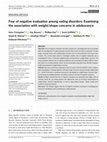
International Journal of Eating Disorders, 2019
Objective: Fear of negative evaluation has been proposed as a transdiagnostic factor associated w... more Objective: Fear of negative evaluation has been proposed as a transdiagnostic factor associated with the development of eating disorders and has been shown to relate to disorders of body image, especially those with weight/shape concerns such as eating disorders and muscle dysmorphia. The current study aimed to investigate whether fear of negative evaluation was a transdiagnostic factor of disorders diagnostically characterized by weight/shape concerns. The study examined whether fear of negative evaluation was associated with higher odds for meeting criteria for an eating disorder and/or muscle dysmorphia, especially those disorders diagnostically characterized by weight/shape concerns.
Method: Data were used from a subgroup of the first wave of the EveryBODY study, a longitudinal investigation of eating disorders and body image concerns among Australian adolescents
(N = 4,030). Participants completed measures on demographics, weight/shape concerns, disordered eating, psychological distress, muscularity concerns, and fear of negative evaluation.
Results: Findings revealed that fear of negative evaluation was associated with higher odds of meeting criteria for any eating disorder but significantly more so for those characterized by weight/shape concerns diagnostically, as well as binge-eating disorder. Similar results were found for muscle dysmorphia.
Discussion: The findings suggest that fear of negative evaluation constitutes a transdiagnostic feature for developing and/or maintaining an eating disorder.
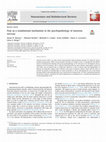
Anorexia nervosa (AN) is an often chronic and potentially lethal psychiatric disorder, for which ... more Anorexia nervosa (AN) is an often chronic and potentially lethal psychiatric disorder, for which the precise etiology remains elusive. While current treatment outcomes are modest at best, it is thought that the identification of translational mechanisms driving the psychopathology of AN will assist in the development and optimization of novel treatments. AN is a disorder characterized by fear and avoidance, hypervigilant scrutiny of one's body, and an unnatural fear of weight gain. Moreover, a suite of anxious traits and regimentation of behavior are atypically common well in advance of the onset of restrictive eating in those with AN. Here we consider the promise of shedding light on causal mechanisms of AN by interrogating the role of fear-related learning, deficits in discriminating safety cues, and extinction of acquired fear. We offer a translational rationale for this line of inquiry, and discuss the clinical implications of considering fear as a translational mechanism in the psychopathology of AN.
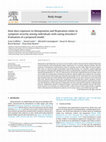
Thinspiration and fitspiration are classes of social media content characterised by idealised dep... more Thinspiration and fitspiration are classes of social media content characterised by idealised depictions of excessively thin and overtly fit/lean bodies, respectively. It is currently unknown whether and how exposure to thinspiration and fitspiration relates to symptom severity within high-risk clinical populations. Thus, in a clinical sample of individuals with eating disorders, we evaluated a model explaining how exposure to thinspiration and fitspiration relates to eating disorder symptoms. Individuals with self-reported eating disorders (N = 228, 47% with anorexia, 93% female) completed measures of image-centric social media use, thinspiration and fitspiration exposure, physical appearance comparisons, and symptom severity. Results showed that more frequent use of image-centric social media was associated with more frequent exposures to both thinspiration and fitspiration. In turn, these exposures were associated with more frequent physical appearance comparisons, and through these, greater symptom severity. Physical appearance comparisons mediated the relationships of both thinspiration and fitspiration exposure with symptom severity. Exposure to fitspiration was more common than exposure to thinspiration. However, thinspiration exposure evidenced stronger associations with symptom severity than fitspi-ration exposure. In conclusion, our model provides a useful account of how eating disorder symptoms relate to thinspiration and fitspiration exposure, and to image-centric social media more generally.
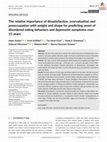
Objective: The aim of this study was to examine the relative importance of dissatisfaction, over-... more Objective: The aim of this study was to examine the relative importance of dissatisfaction, over-valuation, and preoccupation with body weight and shape in predicting increases in disordered eating behaviors and depressive symptoms from adolescence through to early adulthood. Method: The study involved 1,830 participants (60% female) who completed the Project EAT survey during adolescence (mean age = 14.90 years, SD = 1.65 years) and again, 15 years later, in early adulthood. Participants provided assessments of dissatisfaction, overvaluation and preoccupation with weight and shape, as well as disordered eating and depressive symptoms at both time points. Results: The three aspects of body image had distinct patterns of association with the outcomes both concurrently and longitudinally. Dissatisfaction predicted depressive symptoms as well as a wide range of disordered eating outcomes, including dieting, unhealthy weight control behaviors (UWCBs), and binge eating, particularly in female participants. Preoccupation was associated with all of these disordered eating behaviors (but not with depressive symptoms) and was notably the strongest predictor of dieting and UWCBs in female participants. Overvaluation was associated with both disordered eating and depressive symptoms, although typically was a less potent predictor of difficulties than the other aspects of body image. Discussion: Dissatisfaction, overvaluation, and preoccupation are related but make distinct contributions to clinically significant outcomes. Models of eating disorders should move beyond focusing exclusively on dissatisfaction or overvaluation toward a broader conceptualisation of body image. Findings from this study particularly suggest the importance of considering preoccupation with weight and shape.
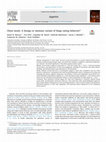
Objective: Engagement in “cheat meals” has been recently documented as a socially endorsed dietar... more Objective: Engagement in “cheat meals” has been recently documented as a socially endorsed dietary practice
oriented towards pursuing physique ideals, and which bears qualitative semblance to disordered eating behavior.
However, the clinical significance of this dietary practice remains unclear.
Methods: We recruited a sample of young adults (n=248; 56% women; Mage=19.29 ± 0.58) and examined
the prevalence and characteristics of cheat meal engagement, including its associations with eating disorder
pathology, psychological distress, and impairment in role functioning.
Results: Findings revealed that 89.1% of participants engaged in cheat meal consumption that was either
planned or spontaneous, with planned cheat meals being predominantly aimed at managing food cravings and
sustaining strict dietary regimens. Among men, the frequency of cheat meal engagement was positively associated
with global eating disorder symptoms (p=0.04), and objective binge episodes (p=0.03), however cheat
meals were not associated with psychological distress or clinical impairment for either gender (p > 0.05).
Conclusions: These preliminary findings suggest that cheat meal engagement is commonly endorsed among
young adults, and particularly among men. Moreover, cheat meals may reflect psychopathological properties
akin to binge episodes, although do not confer psychological distress. Future research is urged in elucidating the
definitional properties of cheat meal engagement, and examining clinical implications for this widespread
dietary practice.
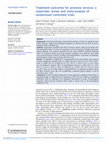
Background. To determine the impact of specialized treatments, relative to comparator treatments ... more Background. To determine the impact of specialized treatments, relative to comparator treatments , upon the weight and psychological symptoms of anorexia nervosa (AN) at end-of-treatment (EOT) and follow-up. Methods. Randomized controlled trials (RCTs) between January 1980 and December 2017 that reported the effects of at least two treatments on AN were screened. Weight and psychological symptoms were analyzed separately for each study. PRISMA (Preferred Reporting Items for Systematic Reviews and Meta-Analyses) guidelines were followed, and studies were assessed using the GRADE (Grading of Recommendations, Assessment, Development and Evaluation) criteria and Cochrane risk of bias tool. Results. We identified 35 eligible RCTs, comprising data from 2524 patients. Meta-analyses revealed a significant treatment effect on weight outcomes at EOT [g = 0.16, 95% CI (0.05– 0.28), p = 0.006], but not at follow-up [g = 0.11, 95% CI (−0.04 to 0.27), p = 0.15]. There was no significant treatment effect on psychological outcomes at either EOT [g = −0.03, 95% CI (−0.14 to 0.08), p = 0.63], or follow-up [g = −0.001, 95% CI (−0.11 to 0.11), p = 0.98]. There was no strong evidence of publication bias or significant moderator effects for illness duration, mean age, year of publication, comparator group category, or risk of bias (all p values > 0.05). Conclusions. Current specialized treatments are more adept than comparator interventions at imparting change in weight-based AN symptoms at EOT, but not at follow-up. Specialized treatments confer no advantage over comparator interventions in terms of psychological symptoms. Future precision treatment efforts require a specific focus on the psychological symptoms of AN.
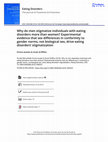
Previous research has shown that men are more stigmatizing
than women toward individuals with eat... more Previous research has shown that men are more stigmatizing
than women toward individuals with eating disorders, including
anorexia nervosa and muscle dysmorphia. We hypothesized that
previously observed sex differences in eating disorders’ stigmatization
are driven by sex differences in individuals’ levels of conformity
to masculine and feminine gender norms. Young adults
(N = 545) completed validated measures of conformity to masculine
and feminine norms and were then randomly assigned to
read a character description of a male or female individual with
anorexia or muscle dysmorphia. Subsequently, participants’ stigmatizing
attitudes toward the characters were assessed.
Multivariate analyses indicated that participants’ conformity to
masculine and feminine norms were superior predictors of stigmatization
relative to biological sex (male/female). Further, participants’
conformity to masculine norms, but not feminine norms,
was significantly predictive of stigmatization. Specific masculine
norms predictive of eating disorders’ stigmatization included selfreliance
and heterosexual self-presentation. Our findings argue
against the notion that men are intrinsically more stigmatizing of
eating disorders than women; rather, sex differences in socialization
to masculine gender norms may drive stigmatization.
Importantly, our study highlights masculine gender norm conformity
as a target for researchers involved in the development of
prevention programs for eating disorders’ stigmatization.
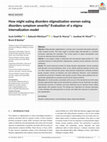
Objective: Eating disorders stigmatization is common and is associated with greater eating disord... more Objective: Eating disorders stigmatization is common and is associated with greater eating disorders symptom severity. This study sought to elucidate stigma internalization as a potential mechanism underlying this association. Two central aspects of stigma internalization were focused on: alienation and social withdrawal. Method: A cross-national sample of individuals with self-reported eating disorders (N = 260) completed measures of eating disorders stigmatization, symptom severity, alienation, and social withdrawal. Results: The model evidenced excellent fit. Eating disorders stigmatization directly predicted both alienation and social withdrawal, which, in turn, directly predicted symptom severity. Indirect effect analyses indicated that greater eating disorders stigmatization ultimately predicted greater symptom severity via alienation and social withdrawal. Moreover, social withdrawal mediated the association of alienation with symptom severity. Fitting a direct pathway from eating disorder stigmatization to symptom severity did not improve model fit. Discussion: Our model provides a potentially useful account of the mechanisms by which eating disorders stigmatization might worsen eating disorder symptom severity. Specifically, the stigma internalization processes of alienation and social withdrawal may be important factors linking stigmatization with symptom severity. The findings have implications for clinicians attempting to help individuals with eating disorders to monitor and modify their responses to eating disorders stigmatization.
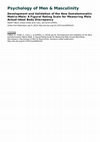
This study aimed to develop and examine the validity evidence of the New Somatomorphic Matrix–Mal... more This study aimed to develop and examine the validity evidence of the New Somatomorphic Matrix–Male (NSM-M) as a measure of actual–ideal body discrepancy. The NSM-M is a visual matrix of 34 male bodies that vary along two dimensions: body fat percentage (range = 4 – 40%) and muscularity (fat-free mass index; range = 16.5–30 kg/m2; 36.4–66.1 lbs/m2). In Study 1, participants were 2,733 sexual minority males recruited via a geosocial networking smartphone application. Participants selected their “actual” and “ideal” bodies on the NSM-M and additionally completed questionnaires measuring body dissatisfaction, eating disorder symptoms, quality of life, and anabolic steroid use. In Study 2, partici- pants were 33 males from a community sample. They completed the NSM-M across two sessions, 7–14 days apart. NSM-M scores demonstrated concurrent and convergent validity as a measure of male body dissatisfaction. In addition, NSM-M scores discriminated between steroid users and nonusers, and between body mass index categories. The NSM-M also demonstrated sound test–retest reliability across a 7- to 14-day period. In sum, the NSM-M is validated figural measure of male actual–ideal body discrepancy with notable strengths, including fast administration time and enhanced ecological validity.
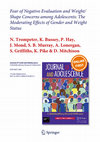
Journal of Youth and Adolescence
Fear of negative evaluation has been linked with weight/shape concerns among adults, however, sim... more Fear of negative evaluation has been linked with weight/shape concerns among adults, however, similar research among adolescents is lacking. We investigated the relationship between fear of negative evaluation and weight/shape concerns, including the moderating roles of gender and body mass index (BMI) in adolescents. Participant were 4045 Australian adolescents (53.7% girls) aged 11–19 years (Mage = 14 years, 11 months), who completed a self-report questionnaire about weight/shape concerns, fear of negative evaluation, and weight and height. Results showed a positive association between fear of negative evaluation and weight/shape concerns, with the association being stronger among girls. Furthermore, the association between fear of negative evaluation and weight/shape concerns was stronger among adolescents with higher BMIs, especially so for boys. These results highlight the role of fear of negative evaluation in weight/shape concerns and suggest potential avenues for prevention programs.
Eating disorders (EDs) are among the most pernicious of psychiatric disorders and typically devel... more Eating disorders (EDs) are among the most pernicious of psychiatric disorders and typically develop in adolescence. In fact, EDs rank among the leading causes of chronic illness in adolescence [1] and may render an array of multisystemic organ damage that includes cardiac complications, structural and functional brain impairment, early-onset bone disease, and in some instances, death . The prevention, detection, and treatment of EDs are therefore of much importance to adolescents and their healthcare providers.
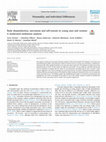
We sought to examine the associations between grandiose (GN) and vulnerable (VN) subtypes of narc... more We sought to examine the associations between grandiose (GN) and vulnerable (VN) subtypes of narcissism and body dissatisfaction (BD), and moderation of these associations by sex, in young men and women, controlling for self-esteem (SE). Three hundred and fifty seven men and women aged 18 to 30 completed an online survey that included measures of GN, VN, BD, and SE. For both men and women, VN was positively correlated with BD and VN was negatively correlated with SE, while GN was (positively) correlated with SE only in women. Initial analysis suggested a role of SE in mediating the association between VN and BD. Moderated mediation analysis confirmed that the association between VN and BD was (fully) mediated by SE and that there was no moderation of this association by sex. The findings support the multidimensional nature of narcissism in young people and highlight the role of SE in accounting for the effects of VN on BD. Further research is needed to elucidate the direction of these associations and to consider their practical implications.
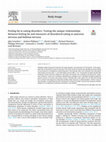
Although widely discussed in theories of eating disorders, the experience of " feeling fat " in t... more Although widely discussed in theories of eating disorders, the experience of " feeling fat " in this population has received little research attention. This study tested the unique relationships between feeling fat and measures of problematic eating behaviours and attitudes. Data were analysed from individuals with anorexia nervosa (AN; n = 123) and bulimia nervosa (BN; n = 51). Correlations revealed considerable unshared variance between feeling fat and shape and weight over-evaluation and depressive symptoms. Moreover, when over-evaluation and depressive symptoms were controlled, feeling fat predicted unique variance in restraint and eating concerns. Findings offer some support for the idea that feeling fat is a distinct and important component of body image concerns in eating disorders. Further research that develops a standardized measure of feeling fat is required. Further research that examines whether feeling fat is an important treatment mechanism is also needed.
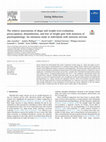
Recent research has demonstrated that certain components of body image (i.e., shape and weight ov... more Recent research has demonstrated that certain components of body image (i.e., shape and weight over-evaluation , preoccupation, and dissatisfaction) in secondary school students shared a distinct clinical significance because of their differential relation to measures of psychopathology. The present study aimed to replicate and extend on these findings by examining the distinctiveness of these body image constructs, in addition to a fear of weight gain, in individuals with anorexia nervosa (AN)—a disorder this is facilitated and maintained by extreme body image concerns. Treatment-seeking females with AN (n = 124) completed a questionnaire battery that measured these constructs. Findings demonstrated that once any shared variance between body image components was removed in regression analyses, fear of weight gain was the only unique predictor of eating disorder psychopathology (e.g., dietary restraint and compulsive exercise), while over-evaluation and preoccupation were the only unique predictors of general psychopathology (e.g., depressive and anxiety symptoms). Overall, these findings demonstrate certain components of body image may operate differently in AN, and reinforce previous calls to consider and assess for distinct facets of body image in this population.
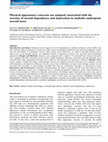
Introduction and Aims. Emerging research suggests that the sub-population of anabolic–androgenic ... more Introduction and Aims. Emerging research suggests that the sub-population of anabolic–androgenic steroid (AAS) users who experience physical appearance concerns may suffer greater psychological dysfunction than other sub-populations, including users with athletic or occupational concerns. Thus, among current AAS users, we sought to determine whether, and to what extent, social physique anxiety—an established measure of appearance concern—was associated with psychological dysfunction.
Design and Methods. Interviews were conducted with a sample of 74 male AAS users living in Australia. Users completed self-report instruments of the severity of AAS dependence, depression, hazardous and risky drinking, use of non-AAS illicit drugs, psychological side-effects due to AAS use and abnormal test results due to AAS use.
Results. Multi-variate analyses revealed that greater social physique anxiety was uniquely associated with more severe symptoms of both AAS dependence and depression. Moreover, the effect size of these relationships was large. Social physique anxiety was not associated with hazardous or risky drinking, non-AAS illicit drug use, psychological side-effects or abnormal test results.
Discussion and Conclusions. Limitations notwithstanding, the study is consistent with the notion that AAS users who experience appearance concerns are at heightened risk of co-morbid psychological dysfunction. Given trends indicating an increase in the prevalence of AAS use in Australia and elsewhere, the findings suggest that health-care systems may need to consider prioritising the sub-population of AAS users who experience appearance concerns. Further investigation of the clinical syndrome of AAS dependence is required, including its relation to body image and eating disorders. [Griffiths S, Jacka B, Degenhardt L, Murray SB, Larance B. Physical appearance concerns are uniquely associated with the severity of steroid dependence and depression in anabolic–androgenic steroid users. Drug Alcohol Rev 2018]
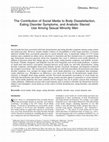
Social media has been associated with body dissatisfaction and eating disorder symptoms among you... more Social media has been associated with body dissatisfaction and eating disorder symptoms among young women and adolescent girls. However, despite notable evidence of susceptibility to body image pressures, it remains unknown whether these associations generalize to sexual minority men. A nationwide sample of 2,733 sexual minority men completed an online survey advertised to Australian and New Zealand users of a popular dating app. Participants answered questions about how frequently they used 11 different social media platforms in addition to questions about their dating app use, body image, eating disorder symptoms, and anabolic steroids. Facebook, Youtube, Instagram, and Snapchat were the most frequently used social media platforms. A pattern of small-sized and positive associations emerged between social media use and body dissatisfaction, eating disorder symptoms, and thoughts about using anabolic steroids. Facebook, Instagram, and Snapchat evidenced the strongest associations. The associations of social media use with both muscularity dissatisfaction and eating disorder symptoms were stronger for image-centric social media platforms (e.g., Instagram) than nonimage-centric platforms (e.g., Wordpress); no differences were observed for body fat dissatisfaction, height dissatisfaction , or thoughts about using anabolic steroids. Previously documented associations of social media use with body dissatisfaction and related variables among women and girls appear to generalize to sexual minority men. Social media platforms that more centrally involve imagery may be of greater concern than nonimage-centric platforms. Additional research with sexual minority men is needed to elucidate the distinctions between adaptive and maladaptive social media use in the context of body dissatisfaction, eating disorders, and anabolic steroid use.
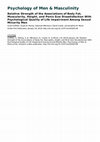
To date, there is scant research on whether different domains of male body dissatisfaction vary i... more To date, there is scant research on whether different domains of male body dissatisfaction vary in the strength of their relationships with psychological well-being. This paucity also extends to sexual minority men (i.e., men who report their sexual orientation as gay or bisexual). Thus, among sexual minority men, we examined the relative strength of the associations of four key male body dissatisfaction domains—body fat, muscularity, height, and penis size—with psychological quality of life impairment. A geographically representative sample of 2,733 sexual minority men completed a self-report survey, which was advertised nationwide across Australia and New Zealand to users of a popular geosocial-networking smartphone application. Participants completed a measure of psychological quality of life in addition to measures of body fat, muscularity, height, and penis size dissatisfaction. Results indicated that increased dissatisfaction with each domain of male body dissatisfaction was uniquely associated with psychological quality of life impairment. The strongest relationship with quality of life impairment was observed for muscularity dissatisfaction (effect size:� small to medium), followed by dissatisfaction with body fat (small), height (small), and penis size (very small). These relationships were not moderated by participants’ sexual orientation (exclusively gay vs. bisexual), cultural background, or relationship status. The findings emphasize the need to prioritize research on muscularity dissatisfaction and related psychopathology, a category inclusive of muscularity-oriented disordered eating, muscle dysmorphia, and anabolic steroid misuse and dependence. Contrary to common disparaging stereotypes about men and their body image concerns, penis dissatisfaction was relatively uncommon and evidenced the weakest association with quality of life impairment.
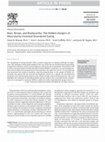
The recognition of eating disorders (EDs) in males represents an ongoing challenge for physicians... more The recognition of eating disorders (EDs) in males represents an ongoing challenge for physicians. This challenge is particularly complex in the case of EDs that are oriented toward muscularity, as opposed to thinness, which current diagnostic criteria do not accommodate. Nevertheless, EDs in males, and muscularity-oriented disordered eating (MODE) in particular, are increasingly prevalent and are likely to be encountered in clinical practice. We report the case of a 16-year-old male who presented with medical instability, requiring hospitalization, in the context of MODE. Importantly , this patient did not meet formal diagnostic criteria for a specific ED, and behavioral symptoms were deemed goal oriented in the context of high school wrestling pursuits. This case highlights the challenges of identifying MODE and the medical risks associated therein. Pediatricians are encouraged to screen for MODE in adolescent males reporting body image concerns.
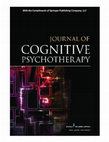
An increasing public and empirical focus on male body image indicates that muscularity is a preem... more An increasing public and empirical focus on male body image indicates that muscularity is a preeminent concern among boys and men. For some, these concerns develop into a complex and disabling psychiatric disorder termed muscle dysmorphia (MD), the hallmark of which is an intense preoccupation regarding one’s (subjectively) insufficient muscularity. Treatment of MD is critical; however, evidence to inform treatment approaches is sorely lacking. The purpose of this article is twofold. First, we provide an overview of the clinical features of MD, drawing particular attention to the preoccupation, functional impairment and psychiatric comorbidity associated with the disorder. Second, we discuss and recommend potential treatment directions for MD, including techniques that have demonstrated efficacy in the treatment of related disorders, namely, body dysmorphic disorder and eating disorders (and anorexia nervosa in particular). Psychotherapeutic techniques, including cognitive restructuring of deleterious perfectionistic and egosyntonic beliefs, and dialectical behavioral techniques to improve the repertoire of emotion regulation skills available to afflicted individuals, are discussed, in addition to psychopharmacological approaches.








Uploads
Papers by Scott Griffiths
Method: Data were used from a subgroup of the first wave of the EveryBODY study, a longitudinal investigation of eating disorders and body image concerns among Australian adolescents
(N = 4,030). Participants completed measures on demographics, weight/shape concerns, disordered eating, psychological distress, muscularity concerns, and fear of negative evaluation.
Results: Findings revealed that fear of negative evaluation was associated with higher odds of meeting criteria for any eating disorder but significantly more so for those characterized by weight/shape concerns diagnostically, as well as binge-eating disorder. Similar results were found for muscle dysmorphia.
Discussion: The findings suggest that fear of negative evaluation constitutes a transdiagnostic feature for developing and/or maintaining an eating disorder.
oriented towards pursuing physique ideals, and which bears qualitative semblance to disordered eating behavior.
However, the clinical significance of this dietary practice remains unclear.
Methods: We recruited a sample of young adults (n=248; 56% women; Mage=19.29 ± 0.58) and examined
the prevalence and characteristics of cheat meal engagement, including its associations with eating disorder
pathology, psychological distress, and impairment in role functioning.
Results: Findings revealed that 89.1% of participants engaged in cheat meal consumption that was either
planned or spontaneous, with planned cheat meals being predominantly aimed at managing food cravings and
sustaining strict dietary regimens. Among men, the frequency of cheat meal engagement was positively associated
with global eating disorder symptoms (p=0.04), and objective binge episodes (p=0.03), however cheat
meals were not associated with psychological distress or clinical impairment for either gender (p > 0.05).
Conclusions: These preliminary findings suggest that cheat meal engagement is commonly endorsed among
young adults, and particularly among men. Moreover, cheat meals may reflect psychopathological properties
akin to binge episodes, although do not confer psychological distress. Future research is urged in elucidating the
definitional properties of cheat meal engagement, and examining clinical implications for this widespread
dietary practice.
than women toward individuals with eating disorders, including
anorexia nervosa and muscle dysmorphia. We hypothesized that
previously observed sex differences in eating disorders’ stigmatization
are driven by sex differences in individuals’ levels of conformity
to masculine and feminine gender norms. Young adults
(N = 545) completed validated measures of conformity to masculine
and feminine norms and were then randomly assigned to
read a character description of a male or female individual with
anorexia or muscle dysmorphia. Subsequently, participants’ stigmatizing
attitudes toward the characters were assessed.
Multivariate analyses indicated that participants’ conformity to
masculine and feminine norms were superior predictors of stigmatization
relative to biological sex (male/female). Further, participants’
conformity to masculine norms, but not feminine norms,
was significantly predictive of stigmatization. Specific masculine
norms predictive of eating disorders’ stigmatization included selfreliance
and heterosexual self-presentation. Our findings argue
against the notion that men are intrinsically more stigmatizing of
eating disorders than women; rather, sex differences in socialization
to masculine gender norms may drive stigmatization.
Importantly, our study highlights masculine gender norm conformity
as a target for researchers involved in the development of
prevention programs for eating disorders’ stigmatization.
Design and Methods. Interviews were conducted with a sample of 74 male AAS users living in Australia. Users completed self-report instruments of the severity of AAS dependence, depression, hazardous and risky drinking, use of non-AAS illicit drugs, psychological side-effects due to AAS use and abnormal test results due to AAS use.
Results. Multi-variate analyses revealed that greater social physique anxiety was uniquely associated with more severe symptoms of both AAS dependence and depression. Moreover, the effect size of these relationships was large. Social physique anxiety was not associated with hazardous or risky drinking, non-AAS illicit drug use, psychological side-effects or abnormal test results.
Discussion and Conclusions. Limitations notwithstanding, the study is consistent with the notion that AAS users who experience appearance concerns are at heightened risk of co-morbid psychological dysfunction. Given trends indicating an increase in the prevalence of AAS use in Australia and elsewhere, the findings suggest that health-care systems may need to consider prioritising the sub-population of AAS users who experience appearance concerns. Further investigation of the clinical syndrome of AAS dependence is required, including its relation to body image and eating disorders. [Griffiths S, Jacka B, Degenhardt L, Murray SB, Larance B. Physical appearance concerns are uniquely associated with the severity of steroid dependence and depression in anabolic–androgenic steroid users. Drug Alcohol Rev 2018]
Method: Data were used from a subgroup of the first wave of the EveryBODY study, a longitudinal investigation of eating disorders and body image concerns among Australian adolescents
(N = 4,030). Participants completed measures on demographics, weight/shape concerns, disordered eating, psychological distress, muscularity concerns, and fear of negative evaluation.
Results: Findings revealed that fear of negative evaluation was associated with higher odds of meeting criteria for any eating disorder but significantly more so for those characterized by weight/shape concerns diagnostically, as well as binge-eating disorder. Similar results were found for muscle dysmorphia.
Discussion: The findings suggest that fear of negative evaluation constitutes a transdiagnostic feature for developing and/or maintaining an eating disorder.
oriented towards pursuing physique ideals, and which bears qualitative semblance to disordered eating behavior.
However, the clinical significance of this dietary practice remains unclear.
Methods: We recruited a sample of young adults (n=248; 56% women; Mage=19.29 ± 0.58) and examined
the prevalence and characteristics of cheat meal engagement, including its associations with eating disorder
pathology, psychological distress, and impairment in role functioning.
Results: Findings revealed that 89.1% of participants engaged in cheat meal consumption that was either
planned or spontaneous, with planned cheat meals being predominantly aimed at managing food cravings and
sustaining strict dietary regimens. Among men, the frequency of cheat meal engagement was positively associated
with global eating disorder symptoms (p=0.04), and objective binge episodes (p=0.03), however cheat
meals were not associated with psychological distress or clinical impairment for either gender (p > 0.05).
Conclusions: These preliminary findings suggest that cheat meal engagement is commonly endorsed among
young adults, and particularly among men. Moreover, cheat meals may reflect psychopathological properties
akin to binge episodes, although do not confer psychological distress. Future research is urged in elucidating the
definitional properties of cheat meal engagement, and examining clinical implications for this widespread
dietary practice.
than women toward individuals with eating disorders, including
anorexia nervosa and muscle dysmorphia. We hypothesized that
previously observed sex differences in eating disorders’ stigmatization
are driven by sex differences in individuals’ levels of conformity
to masculine and feminine gender norms. Young adults
(N = 545) completed validated measures of conformity to masculine
and feminine norms and were then randomly assigned to
read a character description of a male or female individual with
anorexia or muscle dysmorphia. Subsequently, participants’ stigmatizing
attitudes toward the characters were assessed.
Multivariate analyses indicated that participants’ conformity to
masculine and feminine norms were superior predictors of stigmatization
relative to biological sex (male/female). Further, participants’
conformity to masculine norms, but not feminine norms,
was significantly predictive of stigmatization. Specific masculine
norms predictive of eating disorders’ stigmatization included selfreliance
and heterosexual self-presentation. Our findings argue
against the notion that men are intrinsically more stigmatizing of
eating disorders than women; rather, sex differences in socialization
to masculine gender norms may drive stigmatization.
Importantly, our study highlights masculine gender norm conformity
as a target for researchers involved in the development of
prevention programs for eating disorders’ stigmatization.
Design and Methods. Interviews were conducted with a sample of 74 male AAS users living in Australia. Users completed self-report instruments of the severity of AAS dependence, depression, hazardous and risky drinking, use of non-AAS illicit drugs, psychological side-effects due to AAS use and abnormal test results due to AAS use.
Results. Multi-variate analyses revealed that greater social physique anxiety was uniquely associated with more severe symptoms of both AAS dependence and depression. Moreover, the effect size of these relationships was large. Social physique anxiety was not associated with hazardous or risky drinking, non-AAS illicit drug use, psychological side-effects or abnormal test results.
Discussion and Conclusions. Limitations notwithstanding, the study is consistent with the notion that AAS users who experience appearance concerns are at heightened risk of co-morbid psychological dysfunction. Given trends indicating an increase in the prevalence of AAS use in Australia and elsewhere, the findings suggest that health-care systems may need to consider prioritising the sub-population of AAS users who experience appearance concerns. Further investigation of the clinical syndrome of AAS dependence is required, including its relation to body image and eating disorders. [Griffiths S, Jacka B, Degenhardt L, Murray SB, Larance B. Physical appearance concerns are uniquely associated with the severity of steroid dependence and depression in anabolic–androgenic steroid users. Drug Alcohol Rev 2018]
Methods: A community sample of 966 males and 1,031 females living in Australia provided information about their body dissatisfaction, mental health and physical health-related QoL, and eating disorder symptoms. Data were analysed using three hierarchical multiple regressions and interactions between body dissatisfaction and sex were examined.
Results: For both sexes, increasing levels of body dissatisfaction were associated with poorer mental and physical health-related QoL and greater psychological distress. The adverse associations between body dissatisfaction and mental health-related QoL, and between body dissatisfaction and psychological distress, were more pronounced for males.
Conclusion: High levels of body dissatisfaction may threaten the psychological and physical wellbeing of both men and women. Body dissatisfaction appears to be a public health problem, distinct from the eating disorders and other adverse psychological phenomena for which body dissatisfaction is commonly discussed as a risk factor. Males, historically understudied and underrepresented in body image research, warrant increased empirical attention.
Aims: The present study aimed to investigate sex differences in the associations between young peoples’ disordered eating and their admiration for people with anorexia nervosa and muscle dysmorphia.
Method: Male (n = 174) and female (n = 325) undergraduates read one of four descriptions of a male or female character with anorexia nervosa or muscle dysmorphia. Participants then answered questions about their admiration for the characters and completed a measure of disordered eating.
Results: Averaged across character diagnosis and character sex, female participants expressed greater desire to be like the characters than males. For females, moderate to large positive correlations were observed between disordered eating and admiration for characters with both anorexia nervosa and muscle dysmorphia. For males, moderate positive correlations emerged between disordered eating and admiration for muscle dysmorphia, and a single small positive correlation was observed for anorexia nervosa.
Conclusions: The results indicate important sex differences in the associations between young peoples’ disordered eating and their admiration for anorexia nervosa and muscle dysmorphia.
Most of us are average, a few of us are ugly, and a tiny number of us are beautiful or handsome.
Many of us struggle with our own attractiveness, and in particular, the idea that we don’t have enough of it. Research suggests that body dissatisfaction, or not liking one’s body, is a major concern for both men and women. And the pursuit of a more attractive body, if manifested as a drive for thinness or a drive for muscularity, is a big risk factor for the development of eating disorders and muscle dysmorphia, both which are on the rise in Australia.